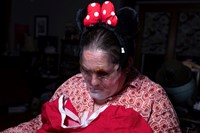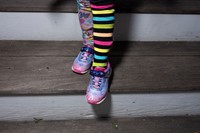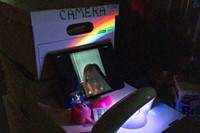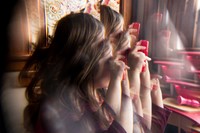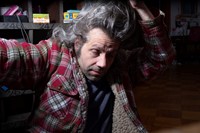A new photo book co-created by Lisa Kereszi, Benjamin Donaldson and their young daughter Ottilie Leete captures an extraordinary and unprecedented year in the pandemic
IN, the new photo book by parents Lisa Kereszi, Benjamin Donaldson and their daughter Ottilie Leete, begins and ends with a child’s drawings of a family home. These illustrations (by Ottilie) are rich with domestic detail – flowers in a vase, clothes hanging in a closet, lamps, beds, framed pictures on the walls, and stick figures smiling and holding hands. Bookending the monograph as they do, the drawings suggest a parenthesis and, in a way, the photographs document a kind of parenthetical time too – an unusual interlude in normal life.
Parents Kereszi and Donaldson (both photographers and alumni and faculty of Yale School of Art) and their daughter Ottilie (now in fourth grade) made IN during the pandemic. As a family, they each took photographs documenting lockdown life in their clapboard house in small-town Connecticut from March 2020 to spring 2021. The book blends their pictures together, creating what writer Cindy House describes in the afterword “a view in triplicate, like a novel with three main characters”.
From snow angels in winter to budding flowers in spring, the book captures the passing of time, encompassing this extraordinary and unprecedented year in a montage of tiny details; a pair of pyjama bottoms are suspended in mid-air as they’re flung across a hallway, a pumpkin rots on a porch step, various screens display homeschooling resources and cartoons, a loaf of bread is sliced, a doll lays prone in an armchair, a pair of small feet in stripy tights descend a staircase.
“As photographers, we take pictures all the time anyway; it’s just our way of making sense of the world, of coping, of protecting ourselves, of collecting, of creating memories and preserving something – and creating beauty,” says Kereszi. “I think it helped us all weather the storm by having something else to do.”
Despite being confined in their “bubble” there’s a real sense of wonder and discovery throughout the book. The enforced isolation initiated a new way of exploring their near-surroundings and, as such, IN feels like a journey through a small planet. “It was a closer look at everything our feet and eyes could reach,” recalls Donaldson. For Ottilie, even the word ‘lockdown’ sounds incongruous with her memories of those times. “Lockdown? Were we really locked in, though?” says Ottilie. “I remember driving through lights – Christmas lights. And I think we found a dinosaur on the beach.” For clarification, Ottilie’s father recalls instead: “it was a dinosaur toy.”
“It was sort of a callback, for me, to the couple years right after I had Ottilie, when I worked on a project that helped pull me out of post-partum depression,” Kereszi recalls. “I would take pictures on walks with her, trying to see and navigate the outside world in a new way as a mother and caretaker, tethered to this new person. I had not thought before of these works being connected in that way – of a coming out and rediscovery during a period of transition and darkness.”
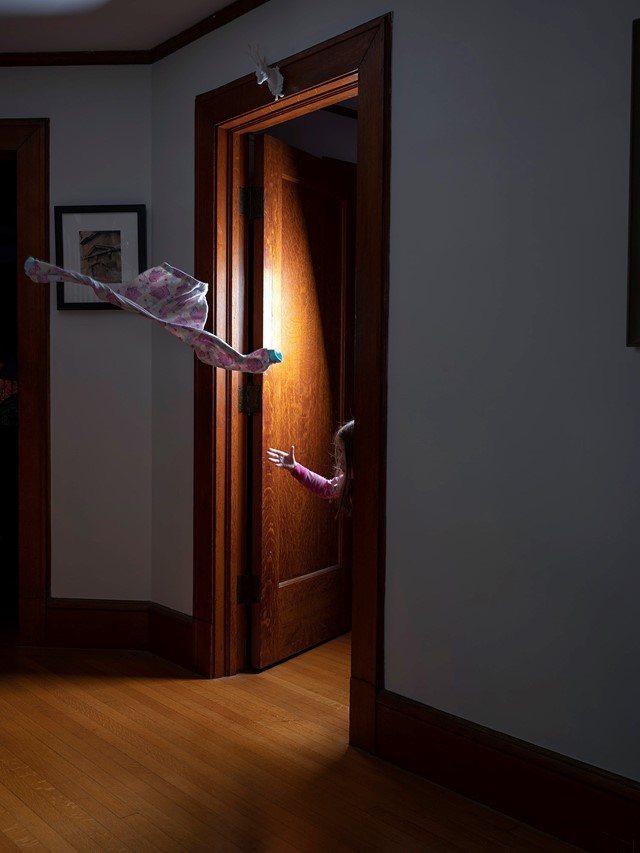
While photography was a way of mediating and understanding their experiences, it also acted as a way of enshrining these moments. “When I worked for Nan Goldin years ago, that idea that she obsessively used her photographs and diaries to have a record to refer to in order to create that memory and hold onto it – and onto someone – always influenced my idea of what photography might be really good at,” Kereszi explains.
Yet, like memory, photography is highly subjective. “I think about my memories of that time, versus what the photographs depict,“ says Donaldson. “The world of the book has now re-shaped some of that experience and focused it around those particular moments. It is a completely recognisable record, but the more mundane parts of the memories of actual experience are now wearing away.”
For Kereszi, “I think that time was harder for me than what the pictures show. That is not to say that it is not accurate but sharing the authorship allows me to let go of my own individual and internalised trauma, and accept that as we made our way together, we were also seeing the same things in our own separate ways. And that is exciting, to see how another creative mind perceives a situation differently than how I might have remembered it, and how those images might interact with my own images.”
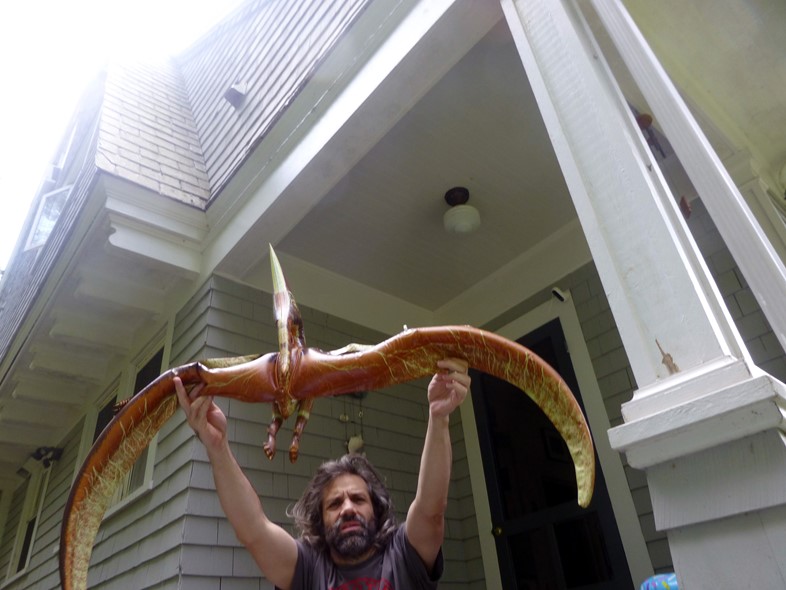
Our lives are made legible to us by stories: how we frame our experiences and how we choose to narrate them to ourselves and others. As a body of work, IN forms part of the fabric of this particular family’s ongoing process of storytelling, enquiry and self-mythologising, a constellation of fragments and details which, for them, shapes and provokes endless speculative configurations of meaning and recollection. As visitors invited into their home via the pages of this book, we bring our own stories to bear on their archive, relating the specifics of their world to our own and tracing the gaps and overlaps in between.
“Photography seems to me to be an excellent vehicle for making something within a frame be both specific to individual experience, yet easily translated by people not at the site of the moment of image creation. This translation is immediate, and takes into account both the similarities and differences,” says Donaldson.
“While this particular house and what fills it and our points of view are very specific and idiosyncratic, it does speak to that Diane Arbus quote that I sort of live by, at least artistically,” says Kereszi. “The more specific you are, the more general it’ll be.”
IN by Benjamin Donaldson, Ottilie Leete, and Lisa Kereszi is published by Roman Nvmerals, and is out now.


